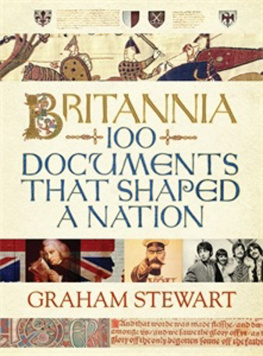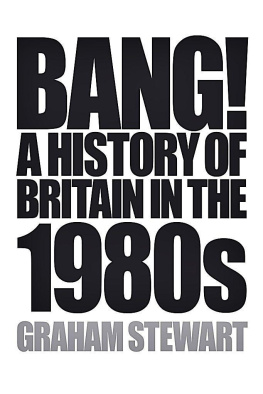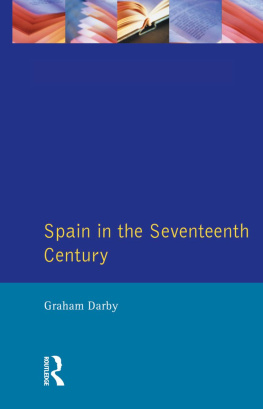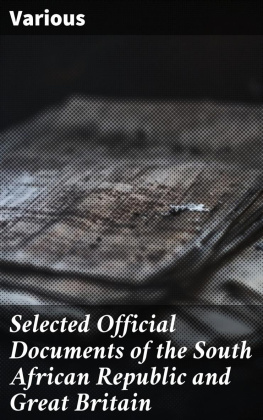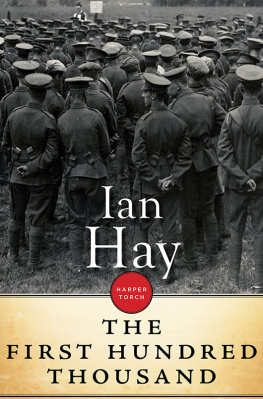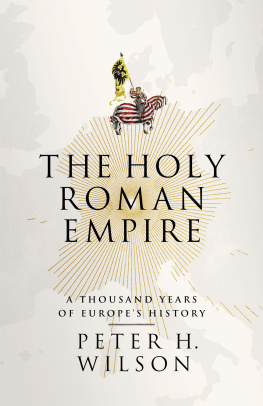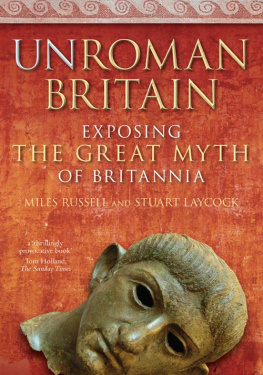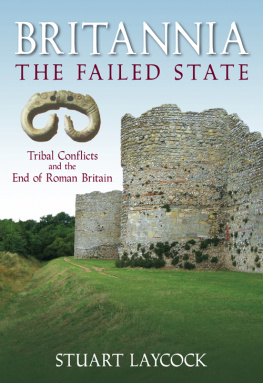BRITANNIA
Also by Graham Stewart
Burying Caesar: Churchill, Chamberlain and the Battle for the Tory Party
His Finest Hours: The War Speeches of Winston Churchill
The History of The Times: The Murdoch Years
Friendship and Betrayal: Ambition and the Limits of Loyalty
BRITANNIA
100 DOCUMENTS THAT SHAPED A NATION
GRAHAM STEWART
First published in hardback in Great Britain in 2010 by Atlantic Books and Callisto, imprints of Atlantic Books Ltd.
Copyright Graham Stewart, 2010
The moral right of Graham Stewart to be identified as the author of this work has been asserted by him in accordance with the Copyright, Designs and Patents Act of 1988.
All rights reserved. No part of this publication may be reproduced, stored in a retrieval system, or transmitted in any form or by any means, electronic, mechanical, photocopying, recording, or otherwise, without the prior permission of both the copyright owner and the above publisher of this book.
The picture acknowledgements constitute an extension of this copyright page.
Every effort has been made to trace or contact all copyright holders. The publishers will be pleased to make good any omissions or rectify any mistakes brought to their attention at the earliest opportunity.
Lines from Casino Royale by Ian Fleming 1953 Gildrose Productions Ltd.
Extract from Life in the UK Test: Practice Questions used with permission.
2007 Red Squirrel Publishing www.redsquirrelbooks.com
10 9 8 7 6 5 4 3 2 1
A CIP catalogue record for this book is available from the British Library.
Callisto ISBN: 978 0 85740 022 2
Atlantic Export ISBN: 978 1 84887 945 4
eBook ISBN: 978 0 85789 136 5
Design and layout by www.carrstudio.co.uk
Printed in Great Britain
Callisto and Atlantic Books
Imprints of Atlantic Books Ltd
Ormond House
2627 Boswell Street
London
WC1N 3JZ
www.atlantic-books.co.uk
For my young nephew,
Rufus Stewart
LIST OF ILLUSTRATIONS
Integrated Illustrations
First Picture Section
Second Picture Section
Founders Charter upon Act of Parliament. The Master and Fellows of Kings College, Cambridge.
Mary Rose from the Anthony Roll. The Art Archive/Magdalene College Cambridge/Eileen Tweedy.
Monteagle Letter and Guy Fawkess Confession. The National Archives, London. SP14/216 (11a).
Union Flag design. National Library of Scotland.
Scottish National Covenant. National Library of Scotland.
Third Picture Section
Death Warrant of Charles I. Houses of Parliament, Westminster, London, UK/The Bridgeman Art Library.
Act of Union. SCOTLANDSIMAGES.COM/Crown Copyright 2007/The National Archives of Scotland.
The Plum-Pudding in Danger. Library of Congress Prints and Photographs Division, LC-USZC4-8791.
Poverty map of London. Atlantic Books Collection.
Fourth Picture Section
War recruitment poster. The Granger Collection/Topfoto.
British Empire map. The Art Archive/Lords Gallery/Eileen Tweedy.
London Blitz damage map. The City of London, London Metropolitan Archives.
Sgt. Pepper album cover. Apple Corps Ltd.
The Dodi and Diana condolence book at Harrods. Courtesy of Harrods.
INTRODUCTION

I n the summer of 1647, Britain was slipping towards anarchy. Five years of civil war had left the Royalist forces broken and scattered. Although King Charles I was held captive, his enemies remained hesitant and unsure. Parliament was in disarray, its politicians reduced to making self-serving gestures having long since lost control of the revolution they had helped set in motion. Only one power in the land seemed capable of restoring order, but even the New Model Army, for all its battle-hardened prowess in war, was riven with dissent in the moment of its apparent victory. Belligerent and unpaid, it marched on the capital. On arrival, its commander-in-chief, Sir Thomas Fairfax, was appointed Constable of the Tower of London. As he was given a tour around the mighty fortified keep, a selection of its treasures was presented for his inspection. Eventually he was shown a fragile document that was already over 400 years old and not even written in English. Nonetheless, it was what the general had specifically requested to see. This is that, he declared, gazing reverentially at the Magna Carta, which we have fought for, and by Gods help we must maintain.
Was the Civil War really a contest over an aged scrap of manuscript? Could the English, so often derided for their indifference to grand ideas, have made such a big issue out of a thirteenth-century set of dictates? In the search to find meaning out of the internecine conflict that gripped the British Isles in the 1640s, historians have identified many strands of discord social, national, political, economic and religious. There is, however, no reason to assume that those who accompanied Sir Thomas Fairfax on his tour of the Tower looked at him strangely when he pronounced on the importance of Magna Carta. In assembling their case against the Crown, Parliamentarians had spent much of the previous twenty years searching out old documents that they believed provided the legal proof that their case was just and that arbitrary rule was alien to the ancient constitution.
At the beginning of the twenty-first century, Magna Carta still receives an occasional mention in the press and in Parliament, and most Britons are aware of its importance, even if they cannot exactly recall why. Actually, most of it was repealed in the nineteenth century and the provisions that remain tend to make the news only because they are perceived to be under threat. The Act of Union of 1707 is another national treasure that crops up in modern debate, principally because of a Scottish nationalist movement whose nationalist aim is to have it consigned to the dustbin of history. For all the opinions expressed about the Act of Union, how many people have seen it, or even have a mental picture of what it looks like? Much the same may be said of the Bill of Rights, whose 300th anniversary in 1989 was greeted with nationwide indifference.
The contrast with the United States of America could not be sharper. Daily, queues shuffle slowly and reverentially through the neoclassical portico of the National Archives in Washington, DC, for a glimpse of the documents that founded the nation. A high proportion of Americans not only know what their Declaration of Independence and Bill of Rights look like, they even have a pretty good recollection of what they say. In fact, Americas Founding Fathers did not hit upon all their deep philosophical ideas, albeit neatly wrapped up in a few choice expressions, in one blinding flash of original genius. For, like Sir Thomas Fairfax, they had an almost mystical reverence for the eloquent defence of rights, freedoms and equality before the law that had been scratched upon the historic parchments of the country they had left behind.

